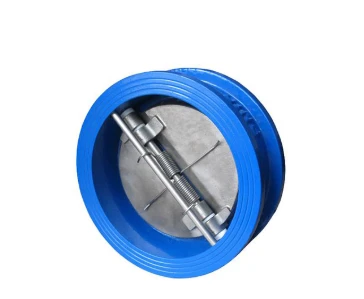Mar . 04, 2025 07:57
Foot valves serve as crucial components in various fluid management systems, acting as the first line of defense for pumps by allowing fluids to flow in one direction while preventing backflow. Understanding their pricing dynamics is essential for procurement experts and project managers seeking cost-effective solutions without compromising performance and durability. Here’s an in-depth analysis focusing on the factors influencing foot valve prices, enhancing buyers’ ability to make informed decisions.

In the fluid control industry, the price of foot valves is influenced by various factors, including material composition, design specifications, brand reputation, and technological advancements. Materials, often categorized into metals such as stainless steel, brass, or bronze, and non-metals like PVC and nylon, directly impact pricing. Metal foot valves, known for their durability and resilience in high-pressure environments, typically command higher prices than their plastic counterparts, which might suffice in less demanding applications.
Advanced design specifications also play a significant role in determining cost. Components that feature enhanced technologies, such as anti-corrosive coatings or self-cleaning mechanisms, may be priced higher due to added manufacturing complexities and the promise of prolonged lifespan. For industries such as oil and gas or wastewater management, where reliability is paramount, investing in technologically superior foot valves can result in long-term operational savings and efficiency.

Brand reputation cannot be overlooked as a key determinant in pricing. Established manufacturers with a history of producing quality and consistent products often place a premium on their foot valves. This premium price is justified through stringent quality controls, extended warranties, and superior after-sales service, providing clients with reassurance and reliability. Emerging brands might offer lower prices, but buyers need to assess their quality benchmarks and industry reviews diligently.
Additionally, recent technological advancements in smart fluid control systems have introduced a new pricing paradigm. Some modern foot valves come equipped with IoT capabilities, allowing for real-time diagnostics and remote monitoring of fluid systems. These innovations, while initially more costly, offer an intelligent approach to maintenance and operational management, appealing to industries committed to embracing Industry 4.0 standards.
foot valve price
Geographical location and market demand also influence the price. Import duties, logistics costs, and regional demand can vary prices significantly. A localized supplier might offer competitive rates compared to imported alternatives, factoring in transportation and import-related expenses. However, thorough vetting of local suppliers for quality assurance remains crucial.
Purchasing decisions should also incorporate considerations regarding installation and maintenance costs. A lower initial purchase price can sometimes be offset by high service and maintenance demands, particularly if the foot valve requires specialized skills for installation or frequent checks. Evaluating the total cost of ownership rather than just the upfront cost provides a more comprehensive financial perspective.
To enhance the purchasing decision, potential buyers should engage with suppliers offering a trial or testing period. This practice can verify the foot valve’s compatibility with existing systems and affirm its expected performance under real-world conditions. Suppliers equipped with a substantial technical support team are preferable, as they can facilitate seamless integration and troubleshooting, thereby avoiding operational downtime.
For procurement specialists, a strategy that incorporates both direct negotiations with manufacturers and leveraging online platforms may yield optimal financial advantages. While direct dealings with producers could bring volume-based discounts and personalized service agreements, online platforms provide the advantage of price comparison across a spectrum of suppliers.
To summarize, when examining foot valve prices, balancing upfront expenditure with long-term benefits is crucial. Prioritizing quality, technological compatibility, and after-sales service ensures that investment in foot valves contributes effectively to the overall efficiency and productivity of fluid management systems. mua


 Call us on:
+86-311-86935302
+86-311-86935302
Call us on:
+86-311-86935302
+86-311-86935302
 Email Us:
info@thriveonvalve.com
Email Us:
info@thriveonvalve.com South of Huanmadian Village Town, Ningjin County, Xingtai, Hebei Province, China
South of Huanmadian Village Town, Ningjin County, Xingtai, Hebei Province, China